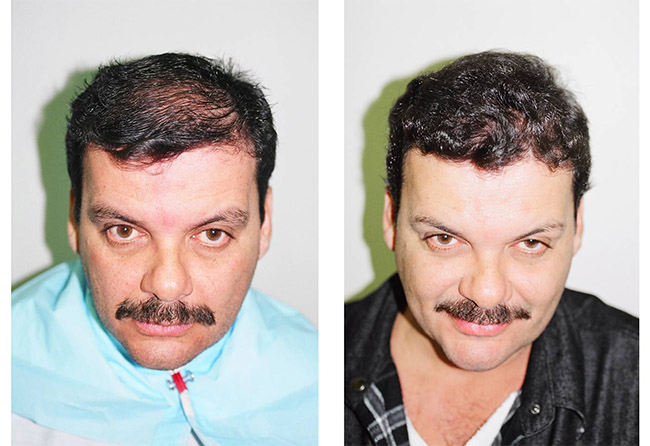Located in a diverse community in Edison, NJ the International Hair Surgical Group has many India American patient’s.
 The hairs on the sides and the back of your head are not affected by MPB. As a result a hair transplant surgeon can remove donor hair follicles from the sides and back and relocate them on the top of the scalp where hair loss has occurred and the newly transplanted hair will grow exactly as it had from the donor region.
The hairs on the sides and the back of your head are not affected by MPB. As a result a hair transplant surgeon can remove donor hair follicles from the sides and back and relocate them on the top of the scalp where hair loss has occurred and the newly transplanted hair will grow exactly as it had from the donor region.
Before beginning a hair transplant your physician will review several important concerns:
- Are you in good general health?
- Do you have any bleeding or healing disorders?
- Your age and degree of hair loss.
- The quality and quantity of your donor hair.
- What is your ultimate cosmetic goal?
These are some of the most important issues in deciding whether someone is a suitable candidate for hair transplantation.
The first step in the hair transplant process is the design of the hairline. The surgeon will sketch a suggestion for placement of the hairline. You are encouraged to participate in this decision process.
Next, the donor area is prepared. Hair in the back is lifted and a narrow strip of hair is trimmed. The hair from above will cover the area after suturing. Both the top and the back of the scalp is then anesthetized. Patients may be given the option of of a sedative while the local anesthesia is applied. This is usually the only discomfort you will feel during the procedure, and lasts only one or two minutes.
A narrow strip is removed from the donor area and the skin from above and below is brought back together with a simple running stitch. The stitches are covered by your hair and removed in about ten days, usually leaving a fine scar line that is concealed by your own hair.
(It is important to note that if you shave your hair in the donor area the scar line may show.)
From the donor strip, naturally occurring Follicular Units, usually groups of 1-3 hairs, are separated under a microscope to preserve every follicle.
